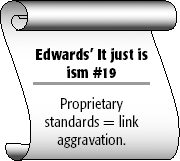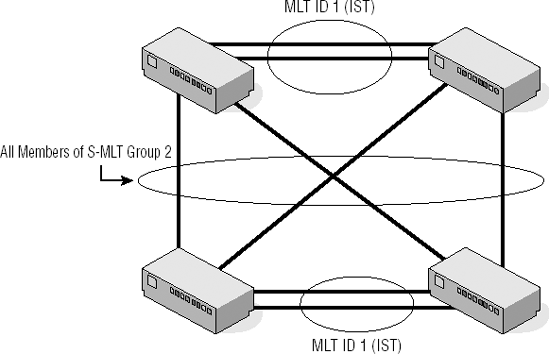9.6. Split Up the Trunk
Some vendors use proprietary standards to enhance their equipment's ability to perform link aggregation. We have tried to remain standardized throughout this book, but there is one proprietary standard that deserves to be mentioned briefly.

At the time of the writing of the second edition of this book, a draft standard is in development that has been submitted to the IETF. Based on the Nortel proprietary Split Multi-Link Trunk (S-MLT)[] solution, this enhancement to traditional LACP allows for physical ports within the MLT to be split between two switches. Figure 9-21 shows an example and a mesh S-MLT.
[] The standard will probably have the same name, but only time will tell for sure.
Figure 9.21. An example of S-MLT mesh

In Figure 9-21, four switches are connected to one another. There is an MLT (referred to as an Inter Switch Trunk [IST]) between each of these switches. All four switches are members of S-MLT group 3.
You do not have to configure your S-MLT group in a mesh configuration. It is also common to have an S-MLT link that ends with a single switch. This would be known as an S-MLT triangle. The benefit of the triangle method is that you can place a switch that does not support S-MLT into the S-MLT environment.[]
[] Obviously, this does not serve ...
Get The All-New Switch Book: The Complete Guide to LAN Switching Technology, Second Edition now with the O’Reilly learning platform.
O’Reilly members experience books, live events, courses curated by job role, and more from O’Reilly and nearly 200 top publishers.

